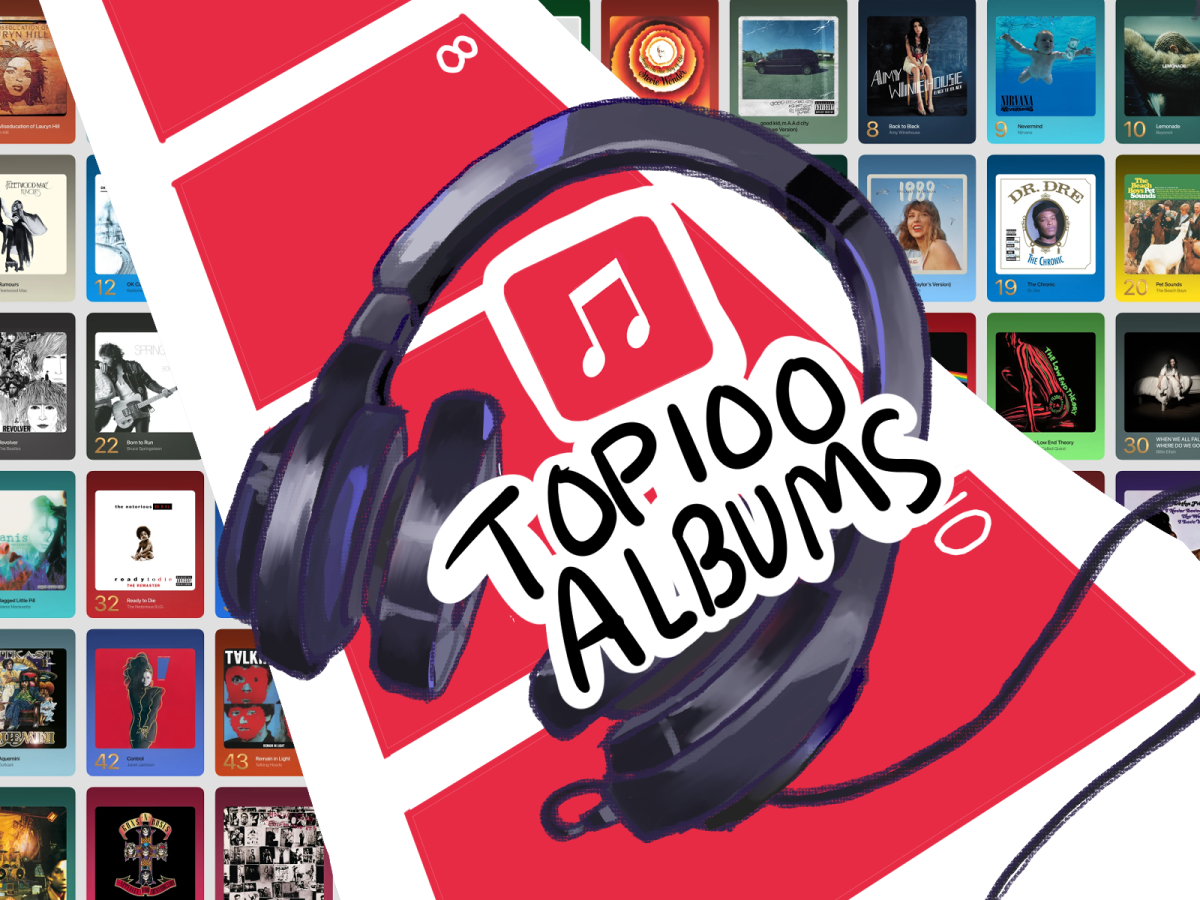Albums are the soundtrack to a generation, so it is no wonder that people cannot help but have elitist attitudes towards their favorites. Now, one streaming site is trying to end the debate.
Apple Music fully revealed their 100 Best Albums of All Time list on May 22, a self-proclaimed “love letter to the records that have shaped the world music lovers live and listen in.” Through the input of industry professionals, Apple Music had everything from new age popstars to ‘60s rock bands battle for a spot. However, the list should not label itself as definitive when it commits to some truly head-scratching choices.
“An album should tell a story,” music lover and math teacher Eric Graham said. “Is it a story of where the artist is at in their life or the message they want to deliver or the history of where society is at in the moment? It should be something never heard before.”
A combination of audience input, historical analysis, and ground rules (e.g. one album per artist, no more than this many for a genre) will go a long way to making future lists a reliable gateway into great music.
By sheer artistic merit and influence, “The Miseducation of Lauryn Hill” by Lauryn Hill, “Songs in the Key of Life” by Stevie Wonder and “Thriller” by Michael Jackson rightfully score high places within the top 10. However, many hip hop fans were puzzled by the exclusion of classic albums such as “To Pimp a Butterfly” by Kendrick Lamar and “Madvillainy” by MF Doom, according to hip-hop enthusiast and junior Ke Yuan.
“‘Illmatic’ [by Nas] is the greatest rap album of all time, but it’s only at 39,” Yuan said. “Nas is a legend in the hip-hop game; he should be at least top 10 or top five. Nas’s storytelling is on a whole other level.”
Pop fans were also surprised to see Billie Eilish’s debut album “When We All Fall Asleep, Where Do We Go?” hit the top 30, sparking claims of recency bias. Yet, the inclusion of several next generation pop stars is not the issue, according to Graham.
“I don’t think having recency bias is a bad thing,” Graham said. “In teaching, we talk about this all the time — if you have inclusion of something it’s always exclusion of something else. By being more eclectic it’s getting more generations to listen to all different types of music.”
For sophomore Aditya Nair, the biggest issue with the inclusion of recent artists is the glaring omission of arguably the biggest one: The Weeknd.
“‘After Hours’ is my favorite album and ‘Trilogy’ is one of the greatest album runs of all time,” Nair said. “How do you snub one of the most influential artists of our time?”
It is commonly argued that a ranking list as ambitious as this is bound to make controversial choices. However, the problem lies in the fact that Apple Music fails to live up to their own criteria.
For example, up until Stevie Wonder’s “Innervisions” at rank 44, it seemed as if every artist was only limited to one album on the list. However, within the top 50 alone, six artists had multiple albums — spots that could have been given to underrepresented genres within the list. Genres like jazz and country were only reserved three spots and one mention at rank 85 (Kacey Musgraves’ “Golden Hour”), respectively.
“It’s not a diverse list,” said Nair. “This is looked at from a very pop, R&B and hip-hop perspective. There are so many languages and genres that aren’t included or mentioned.”
In the future, such lists should take heed to survey a wide list of experts, countries, and audiences across all ages and platforms before they can be called “definitive.” Luckily, questionable choices do not negate the fact that this list does have some incredible artists.
“These artists, whether they change music or change society, have had a great impact on people’s lives,” Graham said. “Your generation doesn’t have to define your music taste. I think it’s super important that people go to these lists and find music that’s new to them.”




